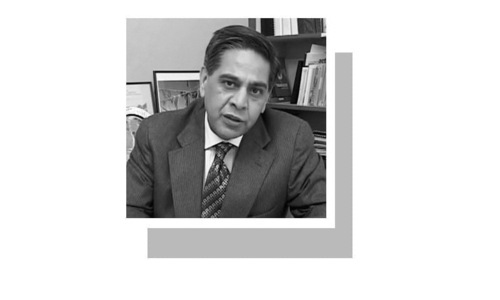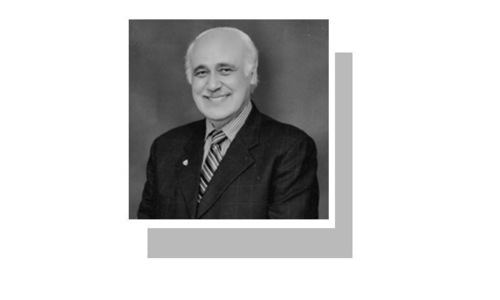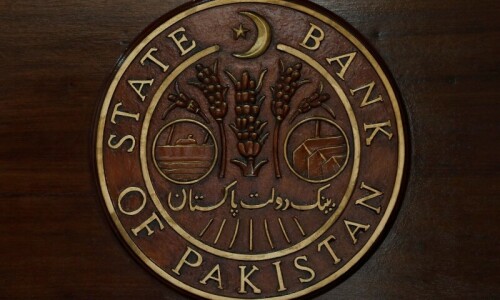 EFFORTS are on, both at the government and at the private level, to explore new markets and also to consolidate positions in places where Pakistan has a token presence in export volumes, following the shrinking of the US and EU markets hit by economic slump.
EFFORTS are on, both at the government and at the private level, to explore new markets and also to consolidate positions in places where Pakistan has a token presence in export volumes, following the shrinking of the US and EU markets hit by economic slump.
For long, the EU and the US absorbed as much as 40-45 per cent of Paskistan’s total annual exports and remained as the main suppliers of capital goods. But during the last decade, Pakistan slowly diversified its export markets and signed Free Trade Agreements (FTAs) with China, Malaysia, Mauritius and Sri Lanka. A proposed FTA with US has been a subject of periodical bilateral consultations over the last few years but with no outcome.
With market diversification, the exports of non-textile products rose by more than 24 per cent in the first quarter this fiscal year. While the textile sector seem discouraged by the withdrawal of research and development subsidy, exporters of leather and leather products, sports goods, surgical instruments, cutleries, furniture and a variety of other assorted items, have grabbed the opportunity offered by rupee depreciation, and they are all set to push their foreign sales in different markets of the world.
Textile exports were down by five per cent in the first quarter 2008-09, mainly because of the economic meltdown in the US and EU, forcing many to look elsewhere. ‘’My next destination is South America,’’ says Iqbal Ibrahim, Chairman All Pakistan Textile Mills Association (APTMA) who mentions Brazil, Mexico etc as other promising markets. ‘’Yes, there are logistics and freight issues involved in export business, but then no business in the world is problem-free,’’ he maintains.
Akbar Sheikh, a prominent APTMA leader from Lahore looks at China where textiles can have a market. With increased prosperity there, the labour cost is rising, pushing up the production cost and offers opportunities for export of selected textile products. ‘’We have generations-old relationship with many Hong Kong businessmen who would serve as a springboard for an export drive in China mainland’’ he said. “If the government helps textile exporters in resolving some of logistics problems, we can generate a few billion dollars from exports in such non- traditional markets, ‘’ Akbar added.
Aziz Memon, a leading garment manufacturer and exporter does not mind, ‘’collaborating with competitors’’ in new markets. He was obviously referring to Indian businessmen who are found in many non-traditional markets such as, South America, Africa and Asia and who may consider to join hands with their Pakistani competitors in the marketing of selected textile products.
Pakistan’s declining dependence on the US and EU markets was more than visible in 2007-08 when exports to the US came down to $3.72 billion from $4.18 billion a year ago. The US share in total exports was also down to 19.5 per cent in 2007-08 as against almost 25 per cent in 2006-07. In the current fiscal, exports to US are likely to further come down because of fall in value as well as volume. UAE—the hub of cross-country trade-- has shown almost 50 per cent jump in imports from Pakistan amounting to over $2 billion in 2007-08.
The export is handicapped because of its very narrow base, consisting hardly of 1,200 products as against the trading of over 5,000 products in the international market. ‘’Right now we are striving to get our due share in the international ‘halal’ food business that is controlled to the extent of 80 per cent by non-Muslims,’’ said Syed Mohibullah Shah, the Chief Executive of Trade Development Authority of Pakistan (TDAP). While trying to explain the strategy for diversifying the expanding the export base. Pakistan, he said, has all the potential to offer branded ‘halal’ food products.
‘’Our focus is on value addition and branded products.’’ Shah has held. a series of meetings with businessmen recently in which his emphasis was on discouraging sale of agricultural raw material as far as possible; and instead to go for industrial processing, hygienic packaging and obtaining a number of products from a single agriculture produce. ‘’There are bright prospects of harvesting 24-25 million tons of wheat next spring,’’ he said, which should make at least one million tons of wheat available for export sometimes in May or June next year. ‘’But our strategy is to export bakery products, confectionary items and a variety of cookies from wheat surplus rather than exporting it in raw form’’, he said. Pakistan’s confectionary industry has expanded considerably in last decade and has ample potential to enter export market in a big way.
The UAE and Saudi Arabia have a big food import bill and are eyeing Egypt, Pakistan and Sudan as their sources of food requirement. The UAE investors have indicated their plans to acquire huge farms in Pakistan to produce grains, fruits and vegetables and even dairy products. In the early eighties, Saudis invested in a livestock farm at Mianwali but suffered heavy losses because of a lack of entrepreneurship and managerial skills of their local partners. Official planners are considering this option for export.
A glaring example of market diversification is the seafood export. For long, Europe remained as the main market for food, that fetched about $250-300 million a year. For the last few years, the EU de-certified Karachi fish harbour because of its “unhygienic conditions” and put a ban on fish import.. ‘’We are now exporting fish of the same volume with better prices to Asian countries,’ the TDAP Chief Executive informed. Plans are in hand to give a clean look with hygienic environment to Karachi Fish harbour, upgrade local fish industry and modernise fishing boats. ‘’We want to regain our share in European sea food market and would rather like to improve it and at the same time further push up our presence in South East Asian and Middle Eastern countries’’, he said.
New markets and new products are the two main pillars on which the future export policy is being planned. Russia has already been targeted for future market exploration as its 300 million population has much more purchasing capacity because of oil and gas earnings. A delegation to Moscow is being planned sometimes in December/January.
Depending on reports from commercial counsellors from East European countries, Pakistan’s proposed trade delegation may include Ukraine and other East European or Central Asian countries in its itinerary. China and East Asia are other target markets. Minerals and agro-based products are set for enlarging Pakistan’s export product line in future. Pakistan is in rich minerals but its exploitation system needs to be modernisd. The last mineral policy was made in 1995 and preparations are afoot to revamp it under the changing conditions.













































